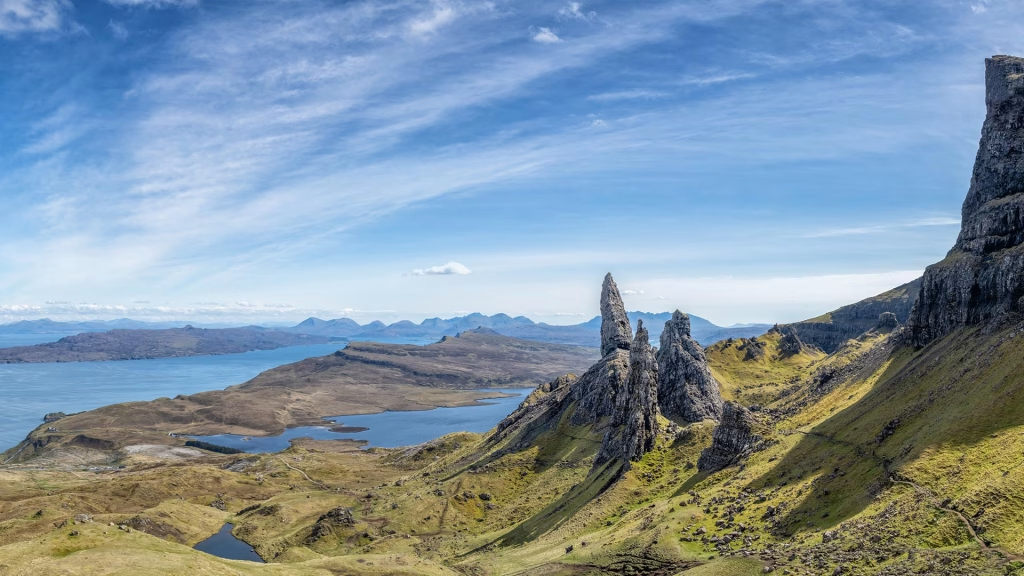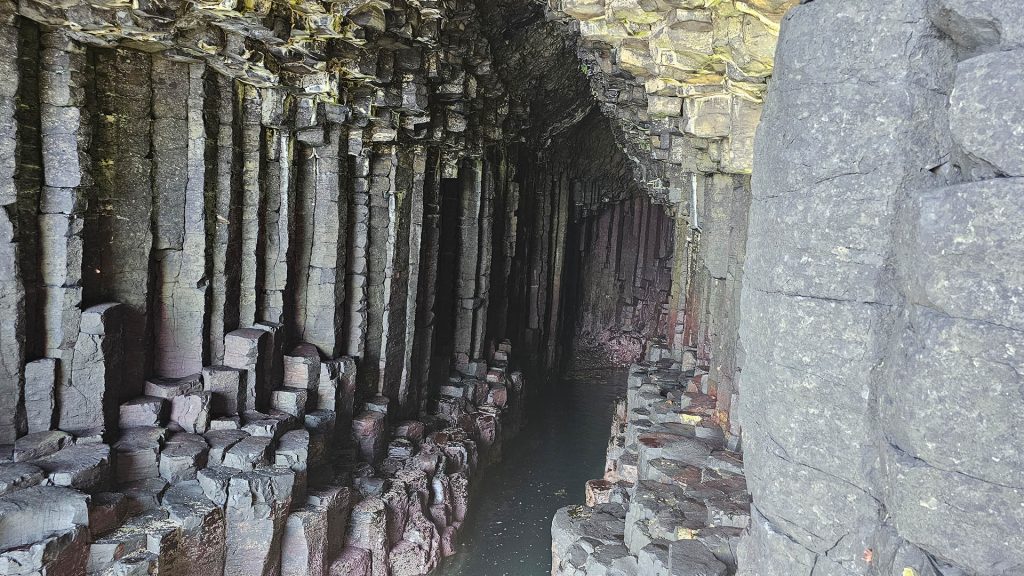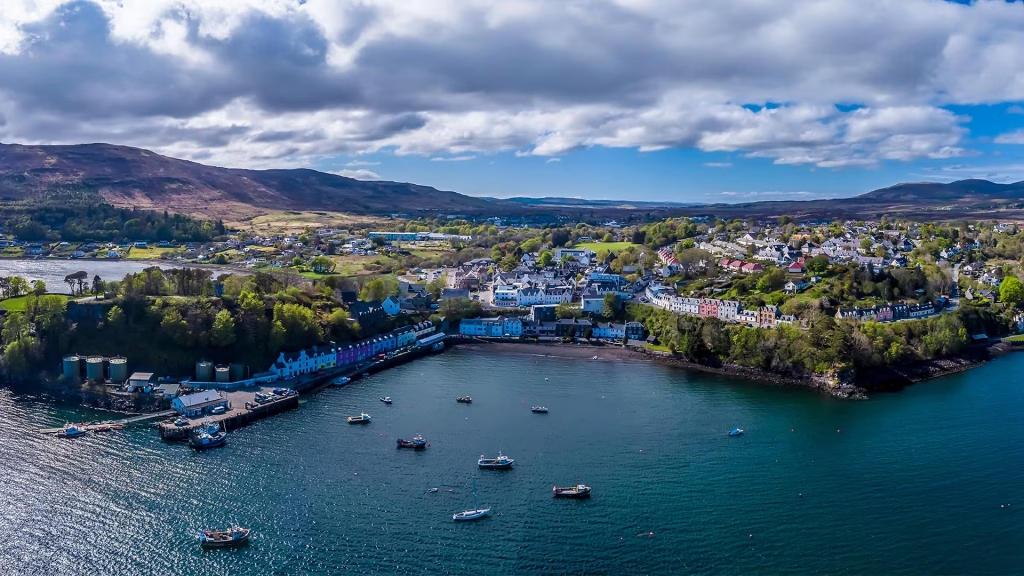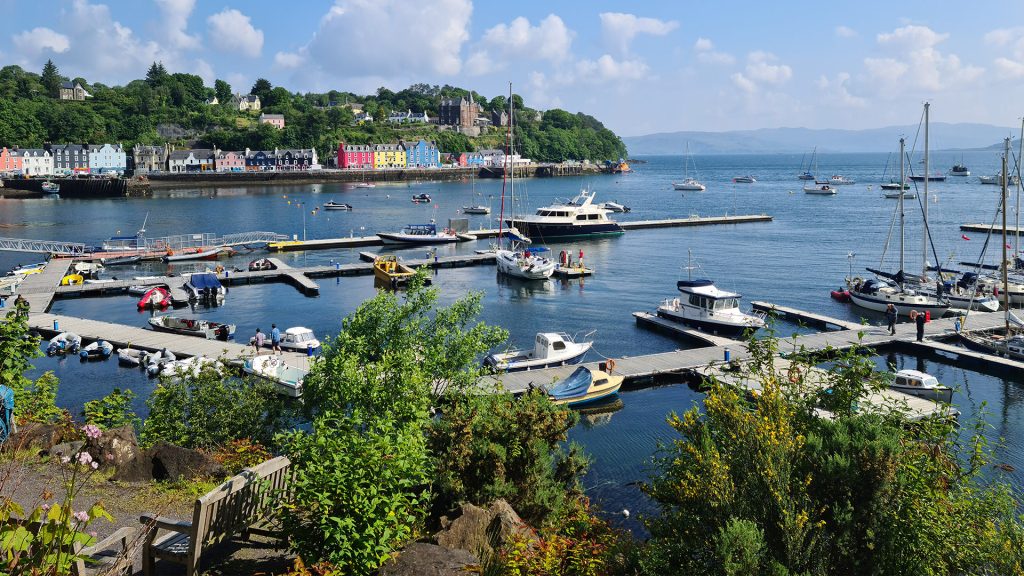Skye and Mull are both unmistakably Hebridean but they deliver very different visits. One island concentrates theatre and iconic viewpoints into a compact set of must-see stops; the other unfolds slowly through harbours, wildlife outings and quiet roads that reward lingering. The simplest way to choose is to decide whether you want concentrated spectacle with easy road access, or a gentler island rhythm where ferry crossings and village life shape the trip.
Landscape and walking
Skye’s character is shaped by steep ridges, sheer cliffs and a mountain backbone that gives the island a vertical, cinematic quality. The Quiraing, the Old Man of Storr and the Cuillin ridge produce immediate, high-impact vistas that can be sampled in short drives or short walks, and longer routes offer serious, technical scrambling for experienced hillwalkers. Even quick stops on Skye often deliver the kind of images people remember.

Mull’s low hills, sheltered bays and crofted shorelines create a different experience. Walking here feels more like exploration than conquest; quiet lanes lead to colourful harbours, ruined chapels and shoreline trails that invite you to stop, watch and wander. Mull rewards time on foot without the need to climb high, and its best routes often end in a working pier, a village café or a quiet stretch of shore.
Wildlife, boats and heritage
Mull excels at sea-based wildlife and island-hopping. Boat trips to Staffa and Iona add a genuine island-to-island element and are a straightforward way to see puffin colonies, guillemots and the distinctive basalt of Fingal’s Cave. Otters, seals and the occasional whale or dolphin are regular sightings when conditions allow. Mull’s heritage sits in its harbours and crofting landscape, so stopping in small villages delivers meaningful encounters with local history and island life.

Skye offers wildlife and history too, but they are often encountered as part of visits focused on geology and mountains. Historic sites on Skye are frequently framed by dramatic landforms and are visited for their setting as much as for their story. If a trip centred on marine wildlife, short boat trips and village-scale heritage matters to you, Mull will usually be the more reliable choice.
Access, logistics and travel feel
Skye’s road bridge changes the travel equation. The bridge removes ferry timetables and allows spontaneous detours, late supplies and shorter day trips across the island. That accessibility makes it easy to cover a lot in limited time and to treat Skye as an extension of a mainland road trip.
Mull requires a ferry crossing from Oban or other brief sailings, and that crossing introduces a natural pause to the journey that many visitors value. Ferries help distribute visitors more evenly across the island and make Mull feel distinctly islanded. The crossing is part of the experience rather than merely a logistical step, and many travellers prefer that deliberate transition.
Crowding and atmosphere
Crowding follows access and concentration of sights. Skye’s famous viewpoints attract predictable flows and can feel busy at peak times, especially in summer; sunrise or late-afternoon timing will materially improve most popular stops. Mull tends to feel quieter because its attractions are spread across more settlements and there are fewer single, headline spots that draw everyone at once. Even in busy weeks you are more likely to find empty lanes, undisturbed bays and opportunities to arrive at a small harbour with few other visitors.
The islands also differ in social texture. Skye’s tourism economy produces a pronounced visitor circuit and a visible service layer around it, while Mull reads more like a living island where pubs, shops and cafés serve locals and visitors on the same terms. If you want to feel embedded in community life rather than in a tourism system, Mull more reliably produces that tone.
Accommodation, food and services
Both islands offer campsites, B&Bs and higher-end stays, but their supply patterns differ. Skye’s visitor economy means more accommodation clustering around the main tourist corridors and gateways, meaning you can find a lot of choices but may need to book well in advance during high season. Mull’s spread of smaller settlements yields fewer high-volume options and a steadier, less frantic booking pattern. Food and small services mirror the islands’ characters: Skye has more eateries driven by tourism economies while Mull’s restaurants and shops are more local-centred and can feel like part of the community rather than the visitor circuit.
Who should pick Skye
Choose Skye if you want bold, dramatic landscapes and a relatively compact set of world-renowned sights that reward focused exploration. Pick it if you prefer mountain walking with technical options, expect to photograph iconic scenery, and value easy road access without ferry timetables. Accept that on peak days you will likely find crowds at the major viewpoints and that planning around sunrise or quieter shoulder hours improves the experience.

Who should pick Mull
Choose Mull if you prefer a calmer pace where the island journey is part of the holiday. Pick it if you want wildlife trips, quieter coastal walks, colourful harbours, and the option to combine short ferry hops to Iona or Staffa. Mull is better suited to visitors who prioritize atmosphere over headline views, who like the idea of an island that reveals itself gradually, and who welcome the gentle friction of ferry timetables as a deliberate part of island life.

Practical decision rule
If your trip time is short and you want the “big views” box ticked quickly, Skye is the more efficient choice because the bridge and compact attraction set let you pack in highlights fast. If you want a relaxed island rhythm, greater chances of quiet, and wildlife or heritage side-trips, Mull gives more of that spread-out experience with fewer crowds and a more intimate feel.
Final verdict
Both islands are excellent choices; the deciding factor is whether you want cinematic landscapes concentrated into a few must-see spots with easier road access, or a quieter island experience that rewards slow exploration and island-to-island hops. Choose Skye for theatrical scenery and convenience. Choose Mull for calm, variety, and a stronger sense of local island life.

